#filmmaking resources
Explore tagged Tumblr posts
Text
Empowering Voices: 2024 Sundance Women to Watch x Adobe Fellows Announced
In an exciting development for the film industry, the Sundance Institute has unveiled the eight talented women selected for the 2024 Sundance Women to Watch x Adobe Fellowship. This prestigious yearlong program is dedicated to nurturing and sustaining the creative practices of women filmmakers, with a strong focus on those from historically underrepresented communities. Launched in 2020, the…
#2024 Sundance Women to Watch#Adobe Creative Cloud#adobe fellowship#creative support programs#film fellowship program#Film Festival#film grants#Film Industry Diversity#film industry support#filmmaker career development#filmmaking resources#independent filmmakers#Sundance#Sundance Collab#Sundance fellowship#Sundance Institute#Sundance Women to Watch x Adobe Fellows#support for women artists#Women Filmmakers#Women in Film#women in filmmaking#women to watch
0 notes
Text
A Step-by-Step Marketing Guide so we can spite traditional publishers (and make people cry).
~ This is a guide specific for fiction/writeblr. All of this is for free and there is little social media posting/ads involved (unless you want to venture into that). ~
Within the writeblr spheres, there's this underlying hope that our stories will find their audience. Perhaps we'll have a fandom full of fanart and video essays, or maybe we'll be an instant classic and sit on collectors' beloved bookshelves. Our stories could sit within the deepest corners of someone's heart and maybe they never tell a soul about what's so special to them. Maybe our stories become those 'underrated masterpieces'.
Or we just want to see people ugly cry over our writing.

Whatever your hope may be, marketing is an important path to venture on (especially because traditional publishers are rejecting diverse books in favor of ones that are already famous + the whole sub-par machine thing they seem obsessed with.)
And thus, my childhood marketing obsession will hopefully be of use to you. This is all for free (unless you want to spend money) and you don't need to figure out social media platforms (unless you want to, and this guide works if you decide to take that route too.)
Step One: Characters
Marketing spheres will define these fictious people as 'avatars' or 'the target audience'. You could also call them characters. Because that's what they are: fictional people.
For this step, you shall create characters that would love your story.
And here's some great news: You've already done this.
Perhaps you wrote your story to comfort a prior version of yourself. Perhaps each character in your story holds an aspect of your personality. Perhaps you were ridiculously self-indulgent and made the story you would've loved to read. These are all possible characters you can reuse for marketing.
Write down 2-4 quick archetypes for these characters. You'll chose an aspect of your story (characters, themes, or the younger-self that you wrote it for) and write a thumbnail sketch. (Main issue, fears, wants, personality traits if they relate to the main issue.)
I'll do it for my story (the Land of the Fallen Fairies) down below:
Anuli-like (my MC): Overthinking and aloof. Wants a happy ending but thinks their current personality/character isn't good enough for one. The present stales in comparison to the past/the childhood they lost. The 'gifted theater kids'. Kamari-like (side character): Postpones happiness in favor of creating a perfect schedule/getting accomplishments. Heavy masking. Creative but doesn't create anymore. Promises themself they'll enjoy themselves later, when they've earned it. Workaholics. My younger self: Wanting a fantasy escapism to embody the traits they wish they had in real life. Dissatisfied and worried about reality. Perfectionists. Self-indulgent: People who love plants and forests and fantasy worlds far away from reality/humanity.
Great! Now it's time to find these characters.

Step Two: Setting.
(Let's assume you're using the internet for your marketing. But a similar method works for real life too.)
Where do the characters live?
In order to figure that out, we need to discover the characters' interests, what they watch to solve their problems, and who they find #relatable.
(You can do this for each character or for all the characters at once.)
For example:
Anuli-like -
interests: Stories. Analysis videos. Fantasy escapism. Things that remind them of their childhood. (so nature, warmth, comfort, play, imagination and the times they would actually enjoy learning.)
Places to look: Nature quotes, ambience videos, children's shows and fairytales (comfort shows). Fandom culture - fanfic video essays, fan art.
Solving problems (the problem being wanting a 'happy ending' but feeling that their personality/lifestyle/characteristics aren't right for one): Mindfulness things. Self-healing. Quotes and meditations and candles galore. Slow living. Nature vlogs. Self care. All that 'live in the moment' culture.
Places to look: Slow living. Nature vlogs. The 'softer self-help' (spirituality stuff. Magic/ overnight answers). Witchcraft. 'aesthetic nature' places. Guided meditations.
#relatable: Burnt out gifted kids. People who think so much that their life passes them by. Storytellers and creative who create to make sense of the world. People who like dark, gory things in spite of who they want to be. People who don't like reality.
Places to look: Those 'learn better and remember everything' places. (The 'burnt-out gifted kid' recovery places.) Stop overthinking spots. Those quotes on Pinterest from poetic people who think too much /aff. Storyteller places. Dark academia. Classical music. One off quotes/ poetry.
Okie dokie. Once you have this, find channels, social media accounts, blogs, songs, books, etc. that fit with the categories you wrote down. (They should appeal to the characters) You can search up some of the terms you listed into searches and see who pops up. Bonus points if you find people that overlap with multiple sections.
I know I didn't include booktube or booktok in here. You can if you want too. But those can be a bit... 'consume these 500 books'. You also want to find other places where people who would like you story live, even if they don't follow booktube or booktok.
Congrats! Now you know where your characters live!
Step Three: the scary part
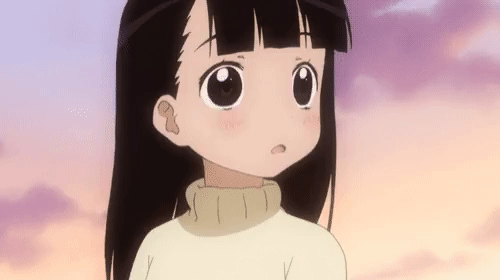
Take everyone you found on your search for the settings and write them down a list. Make sure you get an email/contact info. (they usually list them somewhere under 'for business inquires') Also feel free to watch their content and get to know what attributes these settings have.
And now... we talk to them. about our stories. You can do it. I believe in you.
This called 'pitching your product' in marketing spheres. But you can be informal about it.
I know it can be difficult to talk about your work, so here's a tone to have:
'I made this thing I like and I think you'll like it too'.
What you'll do is send an email (or dm) that goes like this (inspired by Creative Hive on youtube):
Hi [name],
[Genuine compliment]
[Quick sentence or two about your story. Include the themes and who it appeals to. If you have a logline/sentence summary, include that. But I find that the underlying themes and 'who's it's for' is more engaging.
For my story, I might say something like.
I've written a story you might enjoy, since you like [interest]. It's called the Land of the Fallen Fairies. It's a nature-themed commentary on the pursuit of happiness and fixing yourself to deserve that happiness, told by an overthinking, unreliable, houseplant narrator. It was supposed to comfort me when I got frustrated with myself and my happiness chasing, and I hope it can comfort others too.
(That's probably a bit long and I can trim it down a bit.)
You can phrase it like a gift if you want too.]
[Call to action.
'If you like it, I'd appreciate a mention on your [platform].
I know this part may be difficult to mention (imposter syndrome is not fun.) But I promise that if they do like it, they'll be happy to mention it.]
If they don't respond within... four-ish days? (A week at most). then you can include a follow up. For this you can include a template with info about your story. This way it's easy for them to talk about your story.
The template:
title
genre
blurb
Author
where to find the book
Bonus points if you have an additional, physical thing to send them.
Congrats! Now do this pitching process a few times until you've covered most of your bases. (Pitch to as many people as you can. It will get more comfortable as you do it. Play your favorite song and don't let yourself think too hard about it.)
----------
The benefits of this process are that you find people that are already interested in the themes and vibes of your story (in comparison to to ads, which get shoved in everyone's faces.). Someone your audience already trusts will talk about it, which means you don't need to do all this trial and error to find your audience and make content for them.
It's basically a bunch of people talking about something they like!
AND you diversify your audience across niches, but with an underlying theme/interests. Booktok/booktube must appeal to everyone, so it's a hit or miss for recommendations. (Unless there is someone that specifically does one genre/type of story.)

From here you can do fun little things to build up hype and make the book launch feel like this fun event. (I love it when that happens so here's my thoughts about trying to create an event with your story... although that may require another post entirely.)
preorder goals
charity goals
Arg's and puzzles
fund with side plushies and trinkets
Book blog tour
book boxes
as many memes as you can make
rewards (like bookmarks or posters or smth) that people can get for supporting
Talk about the process of creating your story. I know this one channel called 'Dead Sound' that creates 'making of' videos for his short films and they are some of the best videos on youtube.
Okay dear storyteller! Now go forth and share your story with the world!
Additional resources:
Creative Hive <-- a youtube channel that goes through the pitching process.
This video is also very good <-- Haven't watched the rest of the channel but I assume it's also good.
One of the best marketing channels on the internet (the videos are actually entertianing to watch.
Seth Goldin <-- I read his book and took the parts I liked and modified for storytelling marketing.
Dead Sound <-- propaganda to watch the short film series he has (he did the whole 2-d 3-d style wayyyy before spiderverse did... and he's one person making these. One person. It's amazing.
Glitch <--- If someone can figure out how The Amazing Digital Circus was marketed then I will pay you money. It seems to be a lot of memes and funny things.
#writers of tumblr#writerscommunity#writing advice#writing tips#writer stuff#on writing#writeblr#writing community#writer#storytelling tips#fiction#writing#filmmaking#creative writing#writers on tumblr#writers and poets#marketing strategy#pitching#writing resources#resources#useful#for reference#useful stuff#the writeblr library#please do well post#I've spent so much time on this
455 notes
·
View notes
Note
can you give any tips for writing scripts? do you do it before or after you film the scenes? i’m having trouble figuring out dialogue and and how to space things out..
Ofc! This might be long though so sorry in advance!
I always write my scripts before I film a scene. If the script isn’t done, then I can’t film. It’s where I map out everything. Sometimes I’ll deviate from the script, because what’s in my head when I write isn’t always easily replicable in game. I still use it as a guideline for filming though. Here’s a rough sketch of what a detailed script looks like for me:

As far as pacing, I usually try to fantasize about how the scenes would go in my head. I try to be mindful of how long it takes everyone to read too. I read pretty fast, but I know the scenes and I know the script so it’s not the same for me as it is for my audience. I like to let the dialogue hang for a bit so people have time to read what’s written, but to also observe the scene visually.
Also, I use the script to show pacing too. Since I have a larger cast it’s a bit easier to do now, but I don’t like for a character to appear in two consecutive scenes. Especially if they’re in different places and a portion of the scene didn’t include them traveling. So, if Lou appears in scene 1 then he probably won’t appear again until scene 3 or later. In my head I see it as giving the character enough time to move from place to place.
When it comes to story pacing, I don’t want too much to happen too soon. It depends on how long your story is, of course, but I try to have a slow lead up to major things. For season 2, it took all season for Lou to meet his dad. Along the way I built it up by sprinkling in a few scenes here and there. Adding in a few crumbs to conversations. With other things you don’t wanna draw it out too long. Like Kaila, Rory, and Sav’s love triangle. Kaila and Rory were meant to get together quickly to show how much pull Rory has. It also shows how much Savannah was unwilling to fight for her because she knew Kaila wasn’t her person. A lot of this stuff is just personal preference though and depends on what fits your characters.
The best thing I can recommend to do is to watch your favorite shows. See how they block out scenes. See how long each scene lasts. See how the characters move through a scene. Think about the whole season and see when major turning points occurred. Take a little inspiration from that and then tailor it to fit your story. I try not to emulate shows too much because I like for Lykaia to stand on its own (and I have certain views about copying v. inspiration), but it is very helpful to at least observe how other shows are filmed. I try to think if my show was on like Netflix or Hulu- how would it look? How would it flow? I did that a lot more this season though and not the first two. Which is why I’m really not fond of season 1 of Lykaia. At least the first half. Twilight is one of those movies that has such a distinct look that whenever the style is emulated it looks like a copy. Which was completely unnecessary, because that sickly green aesthetic isn’t the only way to show solemn and moody weather. If I wanted that vibe, I needed to tailor it to fit Lykaia. I do that now by using a lot of rain, cooler tones, and a dry color palette. So, it’s stuff like that. It’s just been a learning process for me.
36 notes
·
View notes
Text
Aubrey Plaza’s Husband, Jeff Baena, Dies by Suicide: A Closer Look at the Tragedy and Its Impact
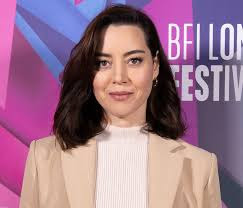
The entertainment industry is reeling after the tragic death of filmmaker Jeff Baena, who was married to actress Aubrey Plaza. Baena, known for his work on films like The Little Hours and Horse Girl, passed away by suicide on January 4, 2025. His sudden death has sparked widespread grief and conversations about mental health in Hollywood and beyond.
Who Was Jeff Baena?
Jeff Baena was an accomplished screenwriter and director, celebrated for his unique approach to storytelling. Born on June 29, 1977, in Miami, Florida, Baena studied film at New York University before embarking on a career in Hollywood. He began his journey as an assistant editor under acclaimed filmmaker Robert Zemeckis and later transitioned into screenwriting and directing.
Notable Works
Baena’s career highlights include a mix of quirky, offbeat comedies and emotionally resonant dramas:
Life After Beth (2014): A zombie comedy starring Aubrey Plaza and Dane DeHaan.
Joshy (2016): A dark comedy that premiered at the Sundance Film Festival.
The Little Hours (2017): A medieval comedy featuring an ensemble cast, including Aubrey Plaza, Alison Brie, and Dave Franco.
Horse Girl (2020): A psychological drama co-written with Alison Brie, praised for its nuanced portrayal of mental health.
Aubrey Plaza and Jeff Baena: A Creative Partnership
Aubrey Plaza and Jeff Baena were more than just husband and wife—they were creative collaborators who frequently worked together. The couple met in the early 2010s and began dating before marrying privately in 2021.
Collaborative Projects
Plaza often starred in Baena’s films, bringing his distinct narratives to life with her versatile acting. Their partnership was a testament to their mutual respect and shared passion for storytelling.
A Private Love Story
Despite their public personas, the couple maintained a relatively private life, choosing to focus on their work and relationship away from the limelight.
Details Surrounding Jeff Baena’s Death
News of Baena’s death broke on January 4, 2025, with reports confirming that he died by suicide. TMZ, CNN, and KTLA have reported on the tragedy, citing sources close to the family.
Statement from Aubrey Plaza
Aubrey Plaza released a heartfelt statement through her publicist, expressing her grief: "Jeff was my rock, my partner, and my greatest inspiration. This loss is unfathomable, and I ask for privacy as I navigate this painful time."
Mental Health Awareness
The news has prompted an outpouring of support for Plaza and renewed discussions about the importance of mental health awareness, particularly in high-pressure industries like entertainment.
The Industry Reacts
Hollywood has rallied around Aubrey Plaza and Jeff Baena’s family, with tributes pouring in from colleagues and friends:
Alison Brie: “Jeff was a genius and a kind soul. His loss is immeasurable.”
Dave Franco: “Working with Jeff was an honor. He was one of the most genuine people I’ve ever met.”
Judd Apatow: “Jeff’s creativity and spirit were infectious. He will be deeply missed.”
Raising Awareness: Mental Health in Hollywood
Baena’s death has highlighted the mental health challenges faced by individuals in creative fields. Studies show that those in entertainment often grapple with high levels of stress, isolation, and public scrutiny.
Resources for Support
Organizations like the National Suicide Prevention Lifeline (1-800-273-TALK) and The Trevor Project offer support for individuals in crisis. Advocates are urging the industry to prioritize mental health resources and create safe spaces for open dialogue.
Jeff Baena’s Legacy
Though his life was tragically cut short, Jeff Baena’s artistic contributions will continue to resonate. His films, known for their originality and emotional depth, leave a lasting impact on audiences and the industry.
Aubrey Plaza’s Future
As fans mourn alongside Aubrey Plaza, many express hope that she will find solace in her late husband’s legacy and her creative pursuits.
Final Thoughts
Jeff Baena’s death is a profound loss for both his loved ones and the entertainment world. His work as a filmmaker and his partnership with Aubrey Plaza serve as a reminder of the power of creativity and love. As conversations about mental health continue, his passing underscores the need for compassion, understanding, and support for those struggling in silence.
#Jeff Baena#Aubrey Plaza Husband#Jeff Baena Death#Mental Health Awareness#Hollywood Tragedy#Life After Beth Director#The Little Hours Filmmaker#Jeff Baena Suicide#Aubrey Plaza Statement#Mental Health in Hollywood#Joshy Movie#Horse Girl Film#Jeff Baena Legacy#Aubrey Plaza Tribute#Suicide Prevention Resources
9 notes
·
View notes
Text




filmmaker stamps…

#🫀 my creations#filmmaker#carrd graphics#carrd decor#carrd resources#carrd stuff#strawpage decor#strawpage graphics#strawpage resources#rentry decor#rentry graphics#rentry resources#web graphics#web decor#i love filmmaker RAAAAH#this is also probably niche#check out these albums NOW#especially if u like dystopian edm/electronica
13 notes
·
View notes
Text
it's really a shame I have to sell 40+ of my life hours every week for poverty wages instead of spending all my time and energy on dozens of creative and technical pursuits with unlimited resources
#nerd alert#lets see if i can list all the hobbies i wish i could be doing instead of working#drawing. both traditional and digital. painting mostly acrylic but id like to get good at watercolors. drawing/writing comics#writing in general. fiction nonfiction poetry lyrics whatever. composing music. music production. singing. practicing piano and guitar#performing someday maybe!#sculpting too. i always forget bc i never do it bc i am never in a place to justify buying clay. i should just get some#i think im fairly good at it tbh. anyway.#knitting. sewing. mending and modding clothes in general. embroidery. id like to learn to crochet at some point#photography and scrapbooking sound appealing. photo editing.#web design. game design. 3d modeling. these are all things i dont really know how to do much of but id like to#animation. voice acting. regular acting. honestly a lot of stuff in the filmmaking process sounds fascinating id like to try some of it#tarot reading. is that a hobby? im gonna say yes. jewelry making.#lots of these ive only dabbled in and some i havent even done that but would like to. but i have no time and or money to get into them.#i would hardly call myself a master at any of these. jack of all trades as it were. and thats fine im fine w that#but given the time and resources i think i could make so many different diverse perfectly average to good things#that people could enjoy in passing or say 'oh how neat :)' about
33 notes
·
View notes
Text

Don't Hire An Editor Until You Know This - Lucas Harger
Watch the video interview on YouTube here.
#edit#video editors#filmmaking#film#editors on tumblr#video editor#editing#editing 101#editor life#filmmakers on tumblr#cinema#hiring a video#editing a film#editing resources#editing help#indie creator#independent film#film community#filmmakers life#art house cinema
4 notes
·
View notes
Text
Dune / His Dark Materials
Compromised, re-edited studio movie with a happy ending: ✅✅
Faithful, complete TV version everyone liked but then kinda forgot about: ✅✅
The Good One: ✅❓
#please let there be some filmmaker out there with a freakish dedication to HDM and the resources to make a version#that can actually Show Daemons Properly#his dark materials#not saying the HDM show was BAD just saying that I don't see fans bring it up much after it ended#i've seen more talk about the 2007 film since
12 notes
·
View notes
Text
oh yeah i put together a (somewhat crappy) guide on how to get an hd barney model like the one i've recently started using in sfm
2 notes
·
View notes
Text


I got inspired by the XPS textures from Jorn-K-Nightmane to create this pack.
I hope y'all have fun using the textures, as well as making your own textures if you want.
Here's the link. :3
UPDATE: 8/24/2023 Fixed up the mouth textures.
#safi jiva#source filmmaker#sfm#texture#textures#monster hunter#monster hunter world#dragon#download#custom#resource
13 notes
·
View notes
Text
it is quite interesting to me how the feeling of the sounds of a word can change how the word feels imthats such a nothing sentence i mean like oo sounds bigger than like ee sounds to me you know. and of course theres kiki and bouba snd all of this.
#this is prettyyyy much not related but i rly like seeing the like. things that a ton of languages have in common like the word for mom#ending to have m sounds bc thats one of the first sounds babies are able to make its very very cute to me yk.#i just think language is sooo interesting and like. theres just so much cool shit with languages you know . and every language is so so so#unique and it makes me kind of sad that i cant understand every language fluently bc i think likee. IDK i think its easy to think that the#only different thing abt languages is like the words yk when i was a kid the only way i thought if languages was like Oh instead of sayin#apple they say pomme which was stupid LOL but ykwim its like. everything about languages is so like. its all manmade its all made by the#people who speak that language words rise up in languages out of necessity and its constantly shifting and changing like. its so beautiful#and thats why i think its silly when ppl think of languages as this like Still thing that like. yk. i think its good when languagss change#and mix together and drift apart and fracture into totally different languages its just so beautiful to me . I LOVE LANGUAGES 💚 i love#accents and dialects and everything all of its just so amazing i wish i could learn about all of it. and i lovee like. videos reconstructing#how languages sounded even like 50 years ago bc they sound different ppl talked different like. its incredible I LOVE LANGUAGE GUYS#i knowww i knowww that most ppl dont rly care abt it and its whatever but i rly rly rly wish more historical movies and whatever had like.#i wish they showed more of what the language actually sounded like at the time I get why they dont i get why like i get it. itd make movies#kind of inaccessible youd have to 1. have an expert to figure out what the language wouldve sounded like 2. probably change the script a bit#3. Train all the actors to speak in that way. etc. but it justtt. idk. i know accuracy is Not the end all be all of good filmmaking i like#plenty of historical movies that arent accurate what matters is telling a good story at the end of the day and sometimes stuff like this#bogs it down and keeps you from relling rhe story tmyou want to tell yk. itd just be rly interesting to me its sort of the same way with#like um. historical clothing you know. i understand why in a lot period pieces the clothing isn't rly accurate and ks more just The vibe of#something from that time to a layperson it gets the job done and esp if the story isnt like. About clothing i get why you wiuldnt want to#put so much time and resources on that kind of thing. but it rly does add something yk#i think stuff like clothing food language etc r all like some of rhe fundamentals of culture so i think if you can get those down it rly#rly fleshes it all out and just makes it feel so much more real yk like. it makes you feel like youre actually in that time or place or#whatever... bc all 3 of those things tell you so much like it tells you about the climate it tells you about traditions and beliefs it tells#you whats important to them it tells you abt like. the lifestyle (like are their clothes very practical or are they more show offish do they#modtly grow their food or is it more hunting or foraging or importing likeee. Even the fabric of the garments tells you so much its rly just#incredible to me I LOVE HUMANITY
0 notes
Text
To make conversations around film/television a little easier for you, I’m going to give a kind of rough list of steps it takes to get something made in Hollywood. It’s my intention to use this explanation in future years, so you can gauge movement on various properties—without expecting too much. If I say “this property is in Phase One,” you’ll know what I mean. Often you’ll hear in the news “Such and such property is being developed for film!” You’ll get excited, then hear no news for years. That is because, despite what the news cycle (generating clicks with hype) would have you think, “Being developed for film” is one of the EARLY steps, not one of the later ones. Here is a rough list of events. This is simplified, and does not include many corner cases that experts could explain to you in better detail. This is also from the perspective of a rights holder, not a screenwriter, producer, or director—for whom the early steps are often different.
This is from a blog post by Brandon Sanderson, where he breaks down what's going on with all his various projects. I don't read his work, so the interesting part for me is that he includes one of the better breakdowns of the process an IP takes, from being pitched as a TV/streaming show or a film, to actually becoming a show or film. (Assuming it makes it over all the various hurtles.)
Honestly, I haven't seen so in-depth a breakdown before (though I'm sure there are others out there!). I wish I'd had this is 2020, when my work was getting a lot of Hollywood attention (which amounted to nothing).
0 notes
Text
Unlocking Creativity with FootageCrate: Your VFX Playground
FootageCrate is a guiding light for creators in the vast cinematic universe, where pixels collide, and imagination runs wild. Let’s explore why your filmmaking toolkit should include this immense collection of visual effects. Why FootageCrate? Affordably Professional-Level Content: Thousands of free filmmaking resources, including explosions and magical spells, are available on FootageCrate.…
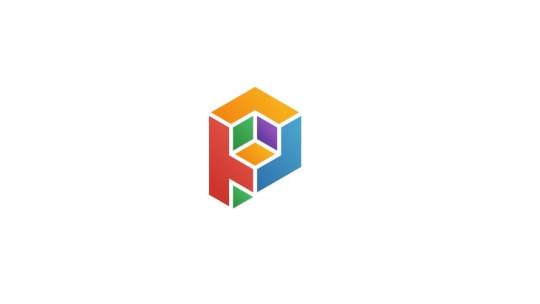
View On WordPress
#Animation#Cinematic Assets#Creative Resources#editor#Fan Films#Filmmaking#free#HD Elements#Horror Projects#Storytelling#VFX#Video Editing#Visual Effects
0 notes
Text
CTSB Compulsory q2
Restate your artistic vision statement.Select one work of design under the theme of social engagement. Discuss this choice in connection with your own aspirations and the themes of CTS B.
I’m a creative person driven by my passion for design and photography. While photography might be my main interest, I am also interested in various other visual art forms such as printmaking, motion graphics and mixed media. I’m proficient with the various graphic tools and have an artistic approach towards everything I create. I’m also a team player and know how to improve myself when given feedback.
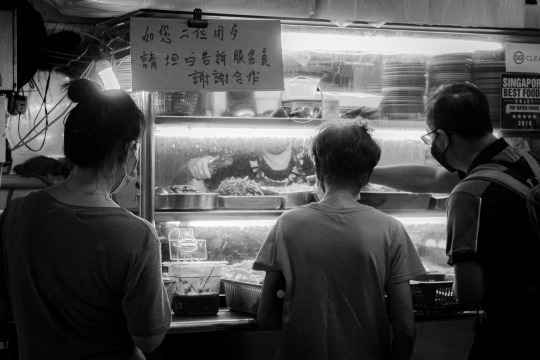
In the future I aspire to become a professional photographer and filmmaker. I also would like to delve more into the world of printmaking and learn more about the process as I would like to work on personal projects in which I can combine my photography with different print making techniques. I also would like to work on projects which are immersive and interactive, as I am really inspired by artists such as Olafur Eliasson. Being a creative means to spend your entire life getting better at your craft while constantly learning, which is what I aim to do in the coming 5 years and for my whole life as a creative.

Coming from the Middle East and South Asia, I carry a bit of my culture wherever I go, as it is a part of me. This has made me appreciate other cultures and be more curious about how design and art differs and adapts. I want to work with different creatives and media agencies around the world to be able to become more knowledgeable as there is always something to learn. whenever I visit a new place, I want to leave that place with an altered perspective on design and aesthetics. A type of perspective that can only be acquired through experiencing a different culture.
In order to be able to achieve my aspirations and goals, I have to be able to build a strong portfolio along the way. Also more importantly self reflect and find out the values and ethics which define me as an designer. I am a designer and I am responsible for the work I put out into the world. It will outlive me. And it will speak for me.
Room to breathe by pixel art works in collaboration with Outernet and Panadol (2022)
An antidote to anxiety, this spectacular, celestial installment was available to all. With the aim of bringing a moment of calm to busy Londoners, the soothing experience guided you through the box-breathing technique, to melt away everyday anxiety.

Located at Outernet, London’s brand-new media and entertainment district on Tottenham Court Road, Room to Breathe provided regular, daily experiences, free of charge, with no booking required.
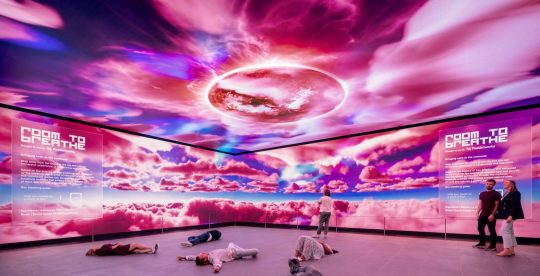
This installation is not only a spectacular way of addressing a social concern of overworked, stressed and overwhelmed public but also a good example of the kind of work that inspires me to work with immersive technology in my designs.
(472 words)
#design#visual communication#design resources#art research#critical thinking#immersiveexperience#interactive design#olafur eliasson#photohraphy#filmmaking#printmaking
0 notes
Text
would love to turn people on to nz on screen, a free archive of new zealand and māori content with over 4500 titles!
the site is accessible in both english and te reo, and it includes over 500 films, 3000 tv series & specials, 2000 documentaries, as well as history series & specials, chat shows, musicals, lgbtq+ content, standup, children's shows, historic news & sports, and more :)
new zealand and māori filmmaking & content, particularly from before the late 2000s, can be exceptionally hard to track down and haven't been given the archival attention they deserve, so this is an amazing resource!
12K notes
·
View notes
Text
Ngl I think live action remakes are just as much of an insult to live action filmmakers as it is to animators,,, because like
In addition to basically saying animation as a craft isn’t taken seriously and isn’t a good enough medium to tell a good story…
Live action remakes also imply that live action filmmakers aren’t good enough storytellers on their own and need to use animated works as a jumping point to make anything iconic…which just…sucks bro
I’m an animator and I’m super out of the loop on iconic live action films, but live action film is a really cool medium! And forcing it to just be a soulless copy of animated films is quite frankly insulting to live action filmmakers, who could probably make new and something super interesting that would utilize the medium better.
And like I know that as a whole live action film is taken more seriously than animation, and that to some extent live action filmmakers might be allowed more freedom than animators yadda yadda but like
My point is
Filmmakers, animated and live action, are super awesome and shouldn’t have to live in each others shadow, live action remakes are an insult to both mediums (as well as a waste of resources and talent), and all filmmakers should get to be the little freaks they are and make whatever weird shit their little heart desires
1K notes
·
View notes